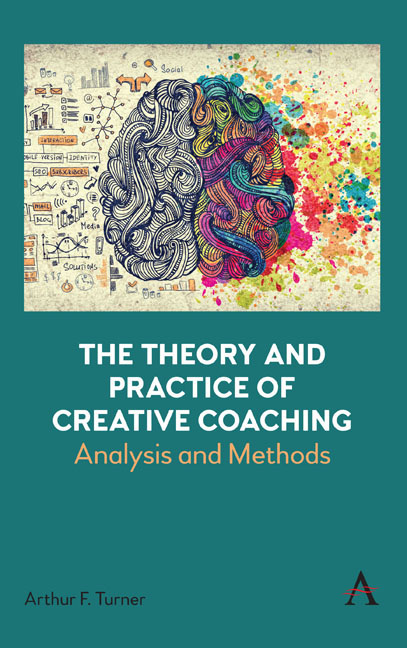Book contents
- Frontmatter
- Contents
- About the Author
- Preface
- Influences
- Introduction
- Section 1 Theory and Research
- Sections 2 and 3 Theory to Practice
- Section 2 Alternative Foci
- Section 3 Three Detailed Examples of Creativity in the Service of Executive Coaching (Walking, the Use of Finger Puppets and the Use of Music)
- Index
5 - Introduction to Practice
Published online by Cambridge University Press: 28 February 2024
- Frontmatter
- Contents
- About the Author
- Preface
- Influences
- Introduction
- Section 1 Theory and Research
- Sections 2 and 3 Theory to Practice
- Section 2 Alternative Foci
- Section 3 Three Detailed Examples of Creativity in the Service of Executive Coaching (Walking, the Use of Finger Puppets and the Use of Music)
- Index
Summary
Practical Manifestations of the Theories of Mediating Objects
Creativity is a basic human urge (Kempster et al. 2017). From the revelations of what British listeners to Jo Whiley's Radio 2 programme get up to in the evening to the ideas of creative collaboration (Clements, 2004) there is an urge for many, if not most, humans to create. This creativity lies sometimes outside of work as the constraints of earning a living force an individual to express themselves more authentically at home or outside the work setting.
Recent articles in the coaching literature provide a framework for both the neurophysiology and the practicalities of creative interventions in coaching (Seto and Geithner, 2018) as well as some of the inherent human behavioural tendencies towards playfulness and the use of humour (Wheeler, 2020).
The theories that have helped me to understand how to engage in the learning beyond explicit coaching models and approaches can be applied to, and help to explain, progression in the coaching ‘space’, in principle at least. Many of the intellectual theories supportive of these ideas are deeply contested (see Jane Bennet's Vibrant Matter and Graham Harman's Object Orientated Ontology). However, even these competing theories can lead the executive coach towards creative and flexible interventions with their clients. Further understanding of this aspect of human creativity can be gleaned from sculptures; Antony Gorman in his recently collaborated book with Martin Gayford, Shaping the World (Gorman and Gayford, 2020) articulates the view, through conversations with his art critic friend, that sculpture (aka human-formed objects) has formed part of human thinking since prehistory. This is where prehistoric human species learnt to represent the world they lived in through the creation of things (often, but not always, useful artefacts or tools). Ideas of working with internal thoughts through the representation of these things is something that is ‘solid’ and external. Thus, the coach and their clients can be seen to be instinctively able to use objects to mediate their worlds and views of their own circumstances using creative interventions and ideas.
Much of my own work in this field started with a chance meeting with my erstwhile colleague Dr Jodie Allinson and her work about the emergence of knowledge.
- Type
- Chapter
- Information
- The Theory and Practice of Creative CoachingAnalysis and Methods, pp. 49 - 58Publisher: Anthem PressPrint publication year: 2023

